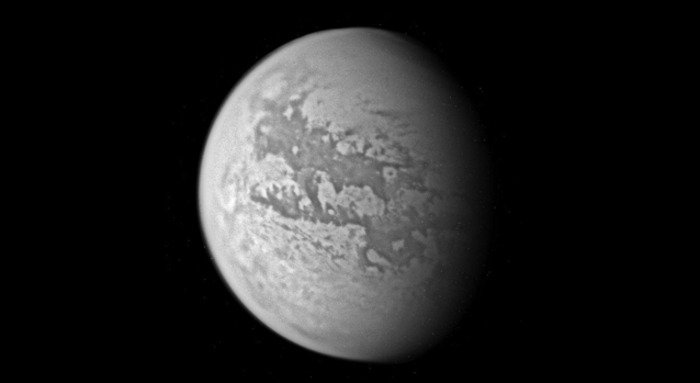Titan as seen during a flyby by Cassini. Credit: NASA
BRISTOL, England, Nov. 28 (UPI) -- A spacecraft has seen an atmospheric change on Saturn's moon Titan that only happens every 15 years and is never observable from Earth, British researchers say.
NASA's Cassini space probe, which has been orbiting Saturn since 2004, has allowed scientists for the first time ever to observe Titan's seasonal atmospheric circulation direction change, they said.
Titan, while technically only a moon, is bigger than the planet Mercury and is often considered a planet in its own right.
It possesses one of only four terrestrial atmospheres in our Solar System, the other three being Earth, Venus, and Mars.
As Titan's rotation axis is tilted by a similar amount to that of the Earth, it experiences seasons in a similar way, but at a much more relaxed pace as Saturn takes 29.5 Earth years to orbit the Sun.
Nick Teanby of the University of Bristol and colleagues used one of Cassini's instruments to map out the seasonal changes in Titan's atmosphere in great detail.
"Using measurements of temperature and chemical tracers by Cassini, we were able to observe changes in the subtle vertical winds and reveal the pole-to-pole circulation cell," Teanby said in a university release.
"For the first time ever, we observed the circulation cell direction reverse over the south pole around the time of the 2009 southern autumnal equinox."
In the coming years Cassini will continue to observe how the seasons develop, researchers said.
"So, these results could eventually lead to a more complete understanding of atmospheric processes on Earth, other Solar System planets, and the many exoplanetary systems now being discovered," Teanby said.















